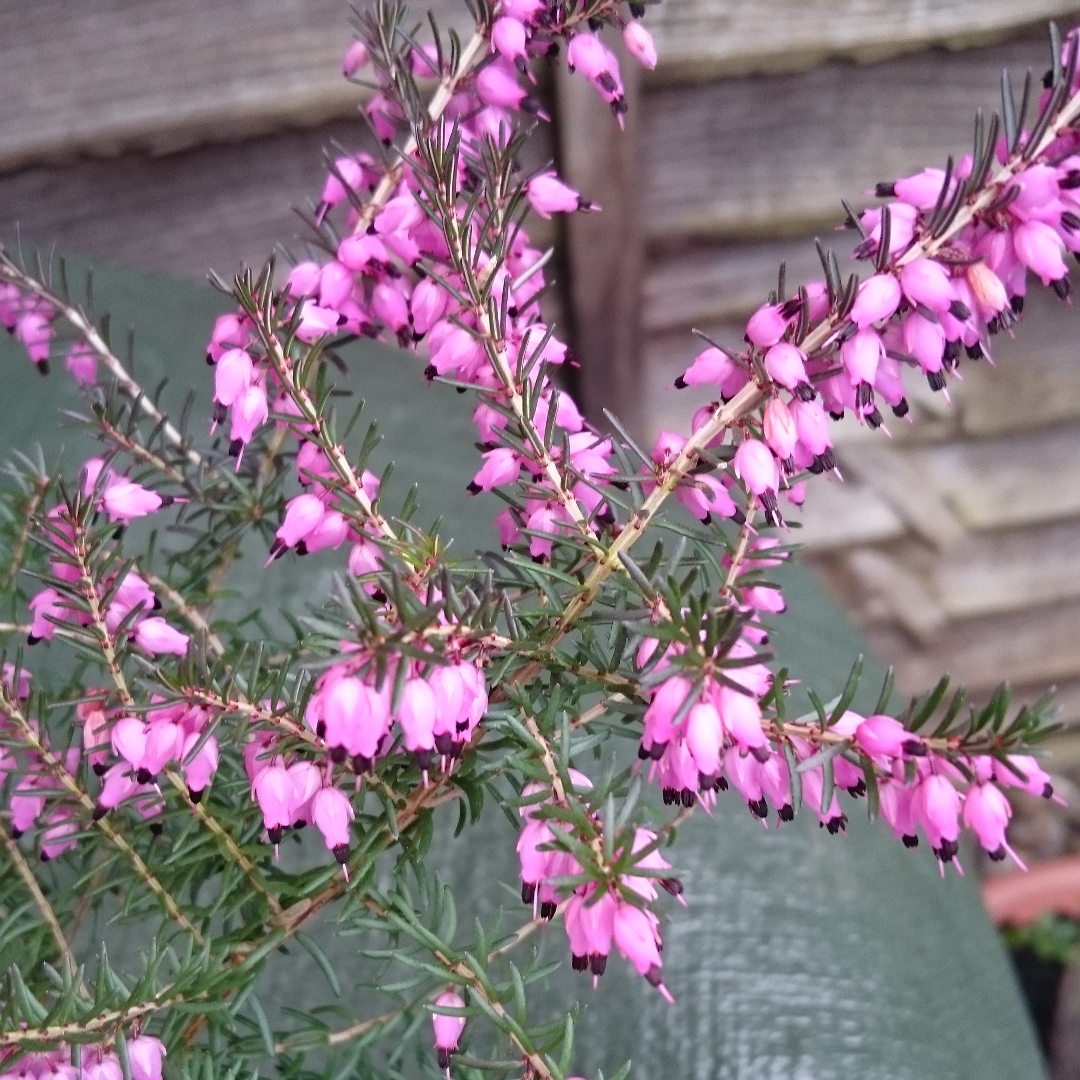
Erica x darleyensis 'Kramer's Rote' syn. Erica x darleyensis 'Kramer's Red'
Darley Dale Heath 'Kramer's Rote'
Erica x darleyensis, which includes many hybrids of Erica carnea and Erica erigena, is one of the easiest heathers to grow. It will grow in most soils, and needs little pruning. Erica x darleyensis are often a bit taller than Erica carnea, and more bushy. Buds appear in late Summer or early Autumn, and some flower as early as early Autumn, and continuing blooming right through Winter to late Spring. Erica x darleyensis prefers free-draining, acid soil, but will tolerate slightly alkaline soils. 'Kramer's Rote' (also known as Kramer's Red') has bronze foliage and bright magenta pink flowers from mid Winter to mid Spring.
Contributed by @vickster
-
Full sun
-
Occasional watering
-
Full Frost Hardy: 5F (-15°C)
-
Moist and free draining
Common name
Darley Dale Heath 'Kramer's Rote'
Latin name
Erica x darleyensis 'Kramer's Rote' syn. Erica x darleyensis 'Kramer's Red'
type
Shrub
family
Ericaceae
ph
5.0 - 6.5 Acid - Neutral
Plant & bloom calendar
-
Best time to plant
-
When the plant will bloom
full grown dimensions
 0.60 M
0.45 M
0.60 M
0.45 M
Erica x darleyensis 'Kramer's Rote' syn. Erica x darleyensis 'Kramer's Red'
Erica x darleyensis, which includes many hybrids of Erica carnea and Erica erigena, is one of the easiest heathers to grow. It will grow in most soils, and needs little pruning. Erica x darleyensis are often a bit taller than Erica carnea, and more bushy. Buds appear in late Summer or early Autumn, and some flower as early as early Autumn, and continuing blooming right through Winter to late Spring. Erica x darleyensis prefers free-draining, acid soil, but will tolerate slightly alkaline soils. 'Kramer's Rote' (also known as Kramer's Red') has bronze foliage and bright magenta pink flowers from mid Winter to mid Spring.
Planting young plants
From Early Spring TO Late Autumn
Plant in spring or during autumn. Set the plants deeply so that the whole of the stem is buried and the foliage rests on the soil. On dry soil, add peat round the roots.
Propagation by cuttings
From Early Autumn TO Mid Autumn
Take semi- ripe cuttings from this season's growth in Autumn. Cut neatly, just below a leaf node, a 5" approx. piece of a healthy shoot that has soft growth at the tip. pinch out the growing tip, and cut off the bottom leaves. Dip the bottom of the cutting in hormone rooting powder, and carefully place in a pot of cutting compost with the leaves just above the level of the compost. Water, label, cover with a polythene bag, and place in a warm, bright place, out of direct sunlight. Take the polythene bag off periodically for a while for ventilation (at least twice a week)
Flowering Season
From Early Autumn TO Mid Spring
The little bell-shaped flowers are produced from Autumn - some cultivars as early as early Autumn - right through Winter and into Spring, some cultivars blooming until mid Spring
Propagation by cuttings
From Mid Summer TO Late Autumn
Take semi- ripe cuttings from this season's growth in Autumn. Cut neatly, just below a leaf node, a 5" approx. piece of a healthy shoot that has soft growth at the tip. pinch out the growing tip, and cut off the bottom leaves. Dip the bottom of the cutting in hormone rooting powder, and carefully place in a pot of cutting compost with the leaves just above the level of the compost. Water, label, cover with a polythene bag, and place in a warm, bright place, out of direct sunlight. Take the polythene bag off periodically for a while for ventilation (at least twice a week)
Flowering Season
From Late Winter TO Early Spring
The flowers are produced in racemes in late winter to early spring,and often starting to flower while the plant is still covered in snow. The individual flower is a slender bell-shape.













